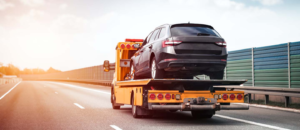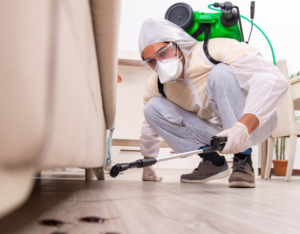Paving connects people, places, and things in a convenient, aesthetically pleasing, and safe way. However, damaged pavement hinders movement, ruins an area’s visual appeal, and increases maintenance costs.
Durability and longevity are key factors when choosing a paving material for your project. This article will discuss a few of the most popular paving materials, including asphalt and concrete, and their advantages. Click here to Learn More Here.

Paved surfaces protect people and vehicles from the elements, including extreme temperatures, precipitation, and freeze-thaw cycles. Proper design, materials selection, construction techniques, and maintenance enhance the longevity and durability of asphalt and concrete pavements. Some paving options, such as permeable pavers, allow water to flow through, reducing the risk of flooding and erosion.
Pavement protection also reduces the need for costly repairs and replacements. A well-maintained paved surface provides a safe, comfortable walking and driving experience for customers and employees, minimizing the risk of accidents and liability claims. Paving can also help businesses create a positive image and brand identity by demonstrating their commitment to environmental stewardship and sustainable development.
Safety is a top priority for paving contractors, who are exposed to a variety of workplace hazards. Proper personal protective equipment (PPE) can mitigate these risks and minimize the occurrence of injuries, illnesses, or deaths. For example, PPE for asphalt paving work should include long-sleeved clothing and long pants to protect the body from hot surfaces and harmful fumes. It should also include a respirator to filter out airborne pollutants and a pair of gloves for handling hot materials.
Traffic control is another important hazard management strategy for paving projects, as it can separate the traveling public from workers and prevent them from being hit by trucks and equipment. Other safety measures for paving include training employees on how to properly operate machinery, implementing a quality assurance program, and conducting regular inspections to identify potential risks.
Umbrella insurance, or excess liability insurance, is a vital investment for paving contractors. It offers additional coverage in scenarios where damages and legal costs exceed the limits of a business’s general liability, commercial auto, or workers’ compensation insurance policies.
The paving industry continues to evolve and improve, offering new choices for businesses that want to increase the efficiency and attractiveness of their infrastructure. A variety of new paving options are now available for different climates and use cases, and innovations in materials, technology, and maintenance have reduced the cost of paved surfaces over time.
Aesthetics
Paving offers the opportunity to create a wide range of aesthetics and enhances the curb appeal of residential and commercial spaces. It’s also highly customizable, with many materials and finishes available to suit different design preferences and landscape features. A reputable paving contractor will be able to guide clients through the options, and help them find the perfect balance between aesthetics and functionality.
Concrete pavers are a popular choice for driveways, patios and walkways, as they provide durability and a timeless, classic look. They can be customized to fit different architectural styles and are often available in a variety of colors, textures, and patterns. Other paving options include bricks and natural stones, which offer a more rustic aesthetic.
Asphalt is another common paving material that can be used to create a wide range of designs. It can be colored and stamped to mimic the appearance of more expensive materials, such as brick or stone, providing a cost-effective option with similar visual appeal. It is also flexible and resistant to damage from freeze-thaw cycles and heavy traffic, allowing it to last for years without needing repair or maintenance.
A well-maintained pavement is not only safe and durable, but it can enhance the overall beauty of any property and boost its value. Pavement can transform dull streets and parking lots into vibrant corridors and welcoming public spaces, encouraging socialization and economic growth.
Properly maintained pavements are also safer and more enjoyable to drive on, reducing accidents and improving visibility and traction. Additionally, paved surfaces are easier to navigate for pedestrians and individuals with disabilities, increasing accessibility and mobility.
Durability
Paving is a key element of the built environment, connecting communities, enhancing mobility, and promoting economic prosperity. It is a critical investment that requires careful consideration to ensure both longevity and cost-effectiveness. A comprehensive understanding of paving lifespan is instrumental in accurate long-term budgeting, allowing stakeholders to effectively schedule maintenance activities and minimize the need for costly repairs and replacements. Moreover, a comprehensive comprehension of the factors that influence paving lifespan helps project managers to develop a proactive maintenance plan, ensuring that infrastructure remains both operational and visually appealing over time.
Concrete paving offers significant durability, able to withstand the pressure of vehicular and pedestrian traffic while maintaining its structural integrity for a prolonged period of time. However, the quality of the concrete used for paving has a major impact on its lifespan, with lower-grade materials and inferior installation practices posing greater risks of early deterioration.
Strict adherence to best installation standards guarantees the longevity of paved surfaces, averting common issues like cracking and settling. A commitment to utilizing the highest-grade materials also enhances durability, bolstering the surface’s resistance to environmental stressors and enabling it to withstand extreme temperature fluctuations and freeze-thaw cycles.
Advancements in paving technology are also empowering the sustainability of constructed environments, facilitating green paving solutions that reduce environmental footprints and promote environmental stewardship. The introduction of pervious concrete, for instance, has dramatically reduced environmental impact by lowering runoff and mitigating water-induced deterioration.
Another way to amplify the durability of paved surfaces is through the use of decorative concrete slabs, which can be molded into a variety of shapes and sizes, including circles and curved shapes. These decorative pavers are often employed in garden landscaping as stepping stones within gravel and garden lawns. In addition, the use of concrete with pigmentation can help prevent color fading caused by moisture and UV sunlight exposure. These strategies can dramatically improve the lifespan of paving, enabling it to remain functional and attractive for a prolonged period of time.
Safety
Paving offers protection to surfaces that need to withstand the elements. Without paving, surfaces like driveways, roads, and sidewalks become susceptible to erosion from rain or snow, causing them to crack, disintegrate, or crumble. Paving protects these areas from harsh weather conditions, saving money on costly repairs in the future.
While there is no way to completely eliminate accidents on construction sites, implementing safety best practices can significantly reduce the risks involved. Before a project begins, contractors should complete a thorough site assessment to identify potential hazards and address them appropriately. This can include ensuring that the work area is separated from passing traffic, providing adequate lighting for nighttime paving, and using flaggers to direct drivers. Moreover, all equipment should have working backup alarms to warn workers when a truck or machine is backing up.
Employees should also undergo proper training to ensure that they understand the equipment they are operating and how to use it safely. They should also be familiar with the location of emergency safety devices, such as fire extinguishers and eyewash stations. Keeping equipment clean and free of oil and grease can also prevent slip-related accidents.
It is also important to provide employees with the proper personal protective equipment (PPE) and conduct regular inspections. This includes helmets, gloves, safety glasses, and high-visibility vests to prevent injuries from falling debris or being struck by machinery. Respiratory protection should be provided for projects that involve handling asphalt, as it can emit dangerous fumes.
Finally, employees should be aware of the signs and symptoms of heat-related illnesses, such as dehydration and heat stroke. These can be prevented by allowing workers to work in shaded areas, providing them with plenty of water, and scheduling breaks during the hottest parts of the day.
By following these simple guidelines, paving projects can proceed safely and efficiently. This helps to promote a safe work environment, protects the health and wellbeing of workers, and improves the overall quality of the finished product. With these benefits in mind, it’s no wonder that paving is one of the most popular and important construction services in existence.


